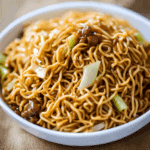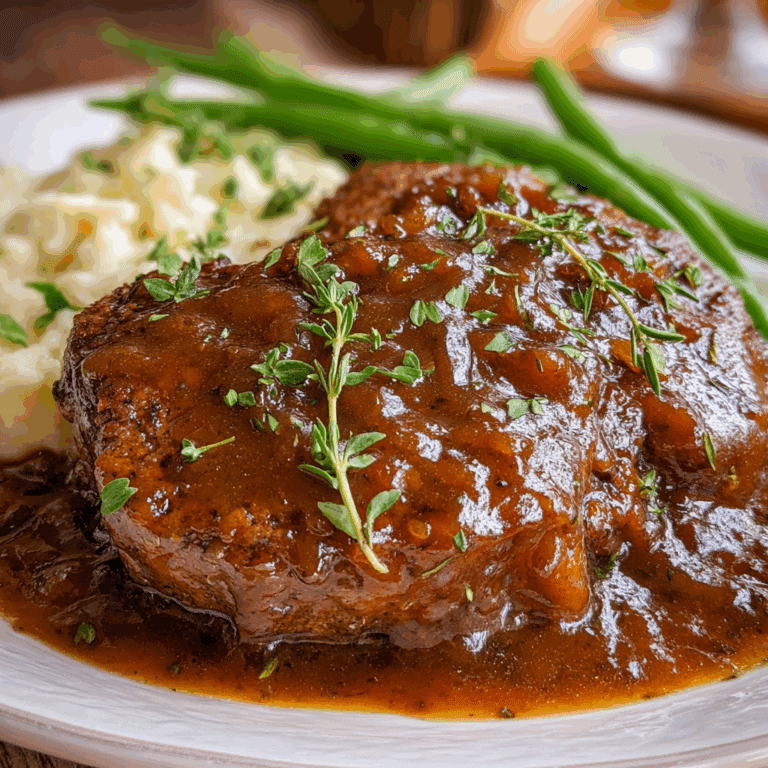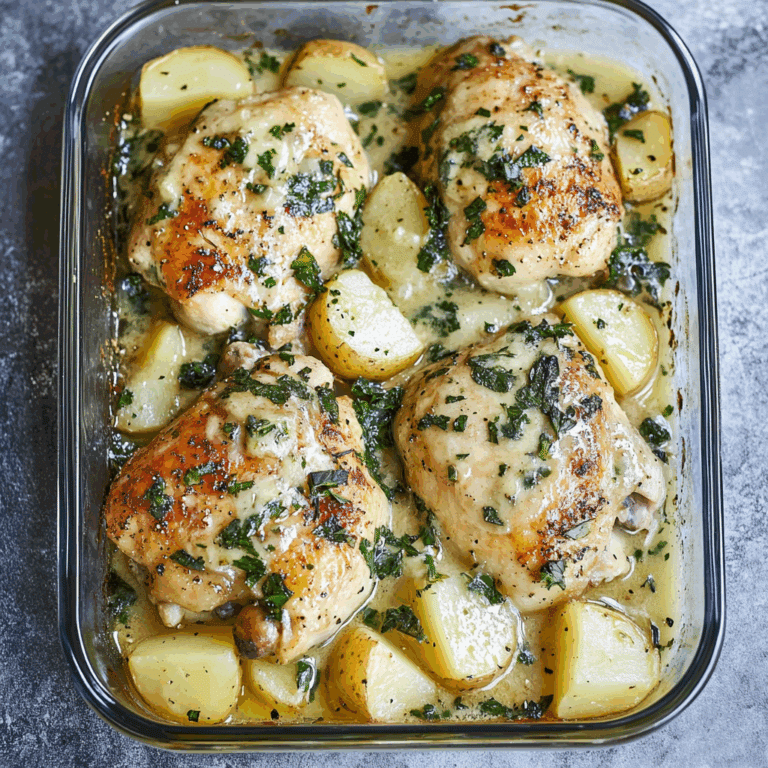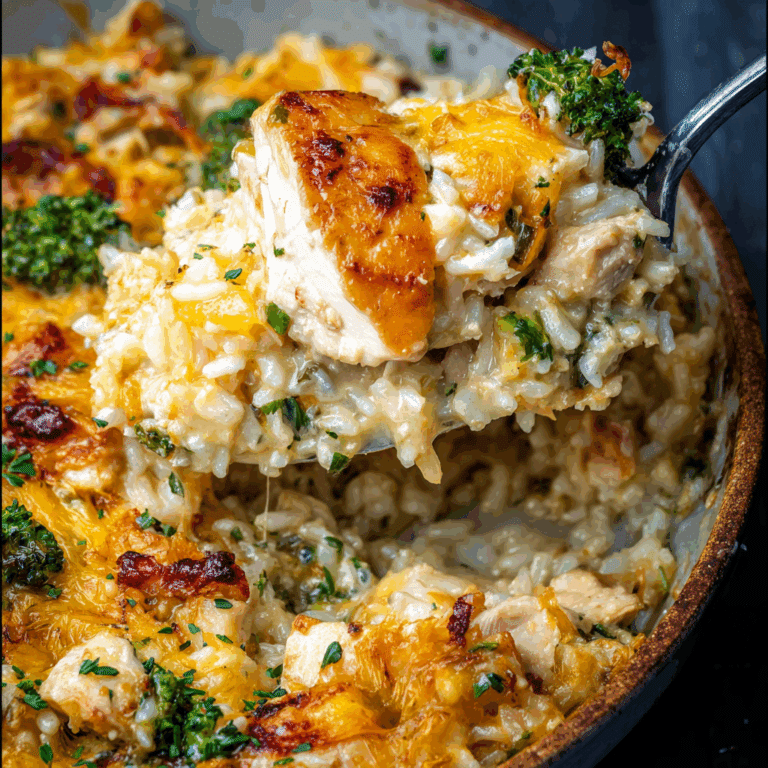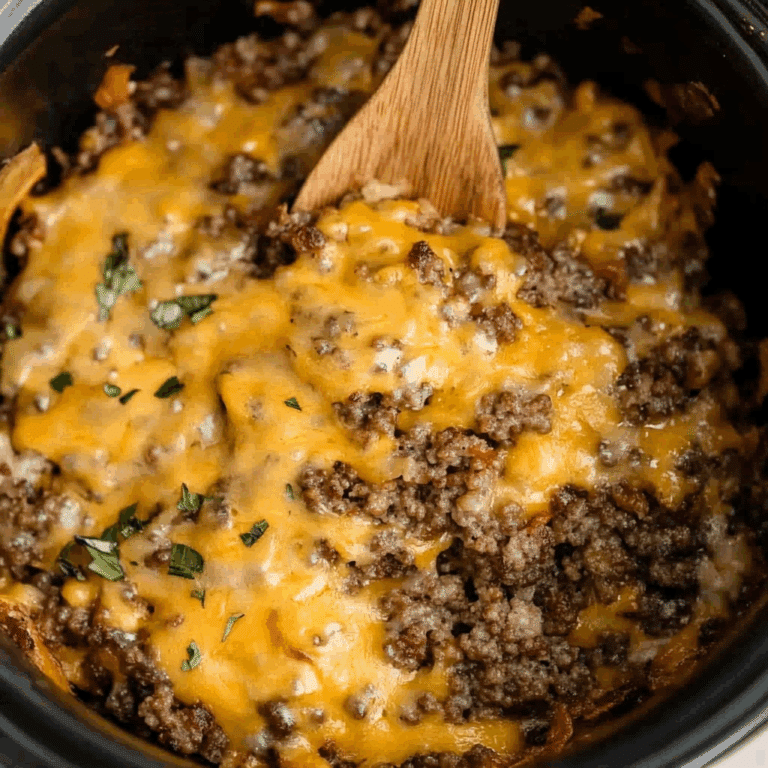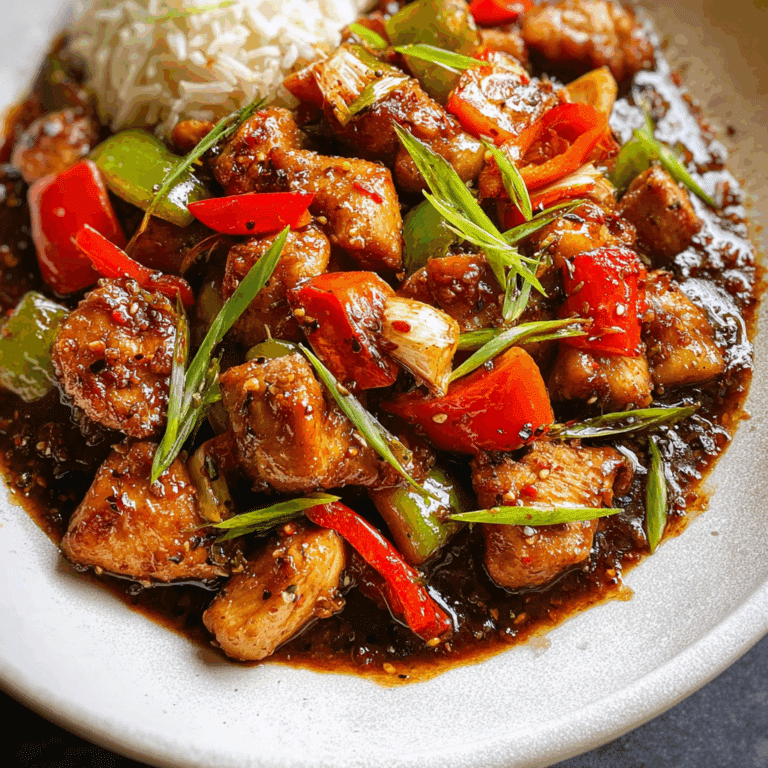Why Panda Express Chow Mein Is So Addictive
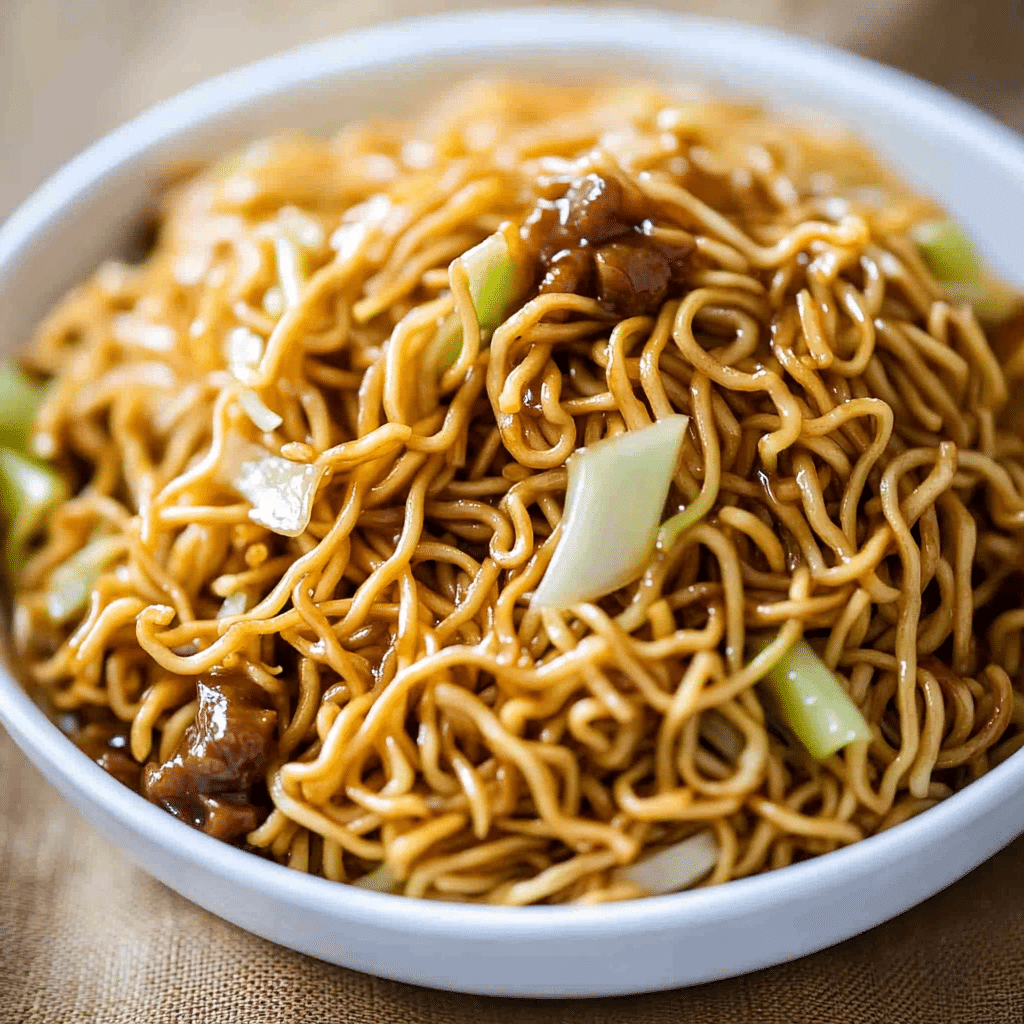
If you’ve ever found yourself delighting in the savory, perfectly cooked noodles at a Chinese fast-food favorite, you know exactly why Panda Express Chow Mein steals the spotlight. This dish is an irresistible blend of tender noodles, fresh vegetables, and a subtly sweet yet savory sauce that creates a crave-worthy experience from the very first bite. Known for its balance of flavors and satisfying texture, Panda Express Chow Mein has become a beloved menu staple that many find utterly addictive and impossible to resist.
Why You’ll Love This Recipe
- A Comfort Food Classic: It delivers the nostalgic taste of Chinese-American takeout that feels like a warm, comforting hug.
- Perfectly Balanced Flavors: The subtle sweetness meets savory soy notes, offering complexity without overwhelming your palate.
- Crunchy and Tender Contrast: Crisp vegetables combined with tender noodles create a delightful textural harmony.
- Quick and Easy to Make: With straightforward ingredients and simple steps, you can whip it up on busy weeknights.
- Versatile and Adaptable: Easily modified with your choice of proteins or extra veggies to suit any dietary need.
Ingredients You’ll Need
The magic behind Panda Express Chow Mein lies in the simplicity and quality of its ingredients, each contributing uniquely to the dish’s beloved flavor and texture. From the tender egg noodles that carry the sauce to the fresh veggies adding crispness and color, every element counts.
- Egg Noodles: Soft yet firm, these noodles create the perfect base that soaks up the sauce wonderfully.
- Shredded Cabbage: Adds crunch and a subtle sweetness that balances the richness of the sauce.
- Sliced Celery: Brings a fresh, crisp texture and mild bitterness to keep things lively.
- Carrots: Bright and slightly sweet, they add vibrant color and nutritional value.
- Soy Sauce: The backbone of the savory flavor, adding umami depth and saltiness.
- Oyster Sauce: A key ingredient for that signature umami punch and subtle sweetness.
- Sesame Oil: Provides a nutty aroma that elevates the overall taste experience.
- Garlic: Essential for a fragrant base that enhances every bite without overpowering.
- Vegetable Oil: Used for stir-frying and ensuring a nice, even cook for the noodles and veggies.
- Salt and Pepper: Simple seasonings to pull all flavors together harmoniously.
Variations for Panda Express Chow Mein
One of the wonderful things about Panda Express Chow Mein is how easy it is to make it your own. Whether you want a plant-based twist or an extra protein punch, these variations let you customize without losing the dish’s quintessential charm.
- Protein Boost: Add cooked chicken, beef strips, shrimp, or tofu to boost the meal’s heartiness.
- Extra Veggie Power: Incorporate bell peppers, snap peas, or mushrooms for added nutrition and texture.
- Spicy Kick: Include chili flakes or a dash of Sriracha to bring a fiery warmth to the classic flavors.
- Gluten-Free Option: Use rice noodles and tamari sauce instead of soy for a gluten-conscious twist.
- Low-Sodium Version: Opt for low-sodium soy sauce and lessen added salt to keep it lighter.

How to Make Panda Express Chow Mein
Step 1: Prepare Your Noodles
Start by boiling the egg noodles according to package directions until they are just tender (al dente). Drain and rinse with cold water to stop cooking and prevent stickiness, then set aside.
Step 2: Stir-Fry the Aromatics and Vegetables
Heat vegetable oil in a large wok or skillet over medium-high heat. Add minced garlic and cook until fragrant, about 30 seconds. Toss in shredded cabbage, thinly sliced celery, and julienned carrots, stir-frying until vegetables are crisp-tender, usually 3 to 4 minutes.
Step 3: Combine Noodles and Sauce
Add the drained noodles directly to the wok with the vegetables. Pour in soy sauce, oyster sauce, and a small drizzle of sesame oil. Toss everything together over the heat until noodles are evenly coated and heated through, roughly 2 to 3 minutes.
Step 4: Season to Taste
Finish by adjusting the seasoning with salt and pepper as needed. Stir well, ensuring every bite has that perfect balance of savory and sweet, then remove from heat.
Step 5: Serve Warm and Enjoy
Transfer your homemade Panda Express Chow Mein to plates or a serving dish and get ready to satisfy your craving.
Pro Tips for Making Panda Express Chow Mein
- Use High Heat: Stir-fry ingredients quickly at high heat to preserve veggies’ crunch and develop flavor.
- Don’t Overcook Noodles: Cooking noodles just right keeps them springy and prevents mushiness.
- Prep Ingredients First: Have all veggies sliced and sauces mixed before cooking to ensure smooth cooking.
- Toss Gently: Mixing ingredients carefully helps maintain noodles’ integrity without breaking them.
- Customize Sauces: Adjust the balance of soy and oyster sauce to match your preferred flavor intensity.
How to Serve Panda Express Chow Mein
Garnishes
Freshly chopped green onions or toasted sesame seeds make great toppings, adding a burst of flavor and a touch of elegance to your dish.
Side Dishes
This chow mein pairs wonderfully with classic Chinese dishes like orange chicken, egg rolls, or hot and sour soup for a complete, restaurant-style meal at home.
Creative Ways to Present
Serve it in a bamboo steamer basket or arrange it alongside colorful stir-fried vegetables for a vibrant, eye-catching presentation that impresses family and friends.
Make Ahead and Storage
Storing Leftovers
Place leftover Panda Express Chow Mein in an airtight container and refrigerate for up to 3 days, preserving freshness and texture.
Freezing
While refrigeration is best, you can freeze the chow mein in a freezer-safe container for up to 1 month, though texture may slightly change upon thawing.
Reheating
Reheat leftovers in a skillet with a splash of water or broth over medium heat, stirring gently to rehydrate noodles and veggies evenly without drying out.
FAQs
What makes Panda Express Chow Mein different from other chow mein?
Panda Express Chow Mein uses a distinctive combination of sauces and specific vegetable ratios, giving it a uniquely sweet and savory flavor with a signature balance of softness and crunch.
Can I make Panda Express Chow Mein gluten-free?
Yes, swap traditional soy sauce with tamari and use gluten-free noodles like rice noodles to create a gluten-free version that still tastes fantastic.
Is Panda Express Chow Mein healthy?
While it contains fresh vegetables and lean components, it’s important to enjoy it in moderation due to the sodium content typical of soy-based sauces.
How can I add protein to this dish?
Add cooked chicken, shrimp, tofu, or beef strips during the stir-fry step for a filling meal with extra protein.
Can I use frozen vegetables for this recipe?
Frozen vegetables can be a convenient alternative, but fresh veggies offer better texture and flavor for the authentic Panda Express Chow Mein experience.
Final Thoughts
If you’re craving a dish that’s bursting with flavor, quick to prepare, and packed with a comforting mix of textures, you can’t go wrong with Panda Express Chow Mein. Give this recipe a try and discover firsthand why it’s such a beloved classic that keeps people coming back for more. Trust me, your taste buds will thank you.
Related Posts
- Why Sausage Alfredo Ravioli Lasagna Is Irresistible
- How to Make the Best Scalloped Potatoes
- Easy Keto Hamburger and Broccoli Skillet Meal
Panda Express Chow Mein
Panda Express Chow Mein is a classic Chinese-American dish featuring tender egg noodles stir-fried with fresh vegetables in a perfectly balanced savory and subtly sweet sauce. This quick and easy recipe delivers that nostalgic takeout flavor with a satisfying contrast of crunchy veggies and soft noodles, customizable with proteins and adaptations to suit any dietary preference.
- Prep Time: 10 minutes
- Cook Time: 15 minutes
- Total Time: 25 minutes
- Yield: 4 servings 1x
- Category: Main Course
- Method: Stir-Frying
- Cuisine: Chinese-American
- Diet: Gluten Free (with substitutions)
Ingredients
Main Ingredients
- 8 ounces egg noodles
- 2 cups shredded cabbage
- 1 cup sliced celery
- 1 cup julienned carrots
- 2 tablespoons soy sauce
- 1 tablespoon oyster sauce
- 1 teaspoon sesame oil
- 2 cloves garlic, minced
- 2 tablespoons vegetable oil
- Salt, to taste
- Black pepper, to taste
Optional Variations
- Cooked chicken, beef strips, shrimp, or tofu for protein boost
- Extra vegetables such as bell peppers, snap peas, or mushrooms
- Chili flakes or Sriracha for spicy kick
- Rice noodles and tamari sauce for gluten-free option
- Low-sodium soy sauce and reduced salt for low-sodium version
Instructions
- Prepare Your Noodles: Boil the egg noodles according to package directions until just tender (al dente). Drain and rinse under cold water to stop cooking and prevent stickiness, then set aside.
- Stir-Fry the Aromatics and Vegetables: Heat vegetable oil in a large wok or skillet over medium-high heat. Add minced garlic and cook until fragrant, about 30 seconds. Add shredded cabbage, sliced celery, and julienned carrots, stir-frying until vegetables are crisp-tender, about 3 to 4 minutes.
- Combine Noodles and Sauce: Add the drained noodles to the wok with the vegetables. Pour in soy sauce, oyster sauce, and drizzle sesame oil over. Toss together over heat until noodles are evenly coated and heated through, about 2 to 3 minutes.
- Season to Taste: Adjust seasoning with salt and pepper as needed. Stir well to achieve the perfect balance of savory and sweet, then remove from heat.
- Serve Warm and Enjoy: Transfer chow mein to plates or a serving dish and serve immediately to satisfy your craving.
Notes
- Use high heat to stir-fry quickly, preserving vegetable crunch.
- Do not overcook noodles to maintain their springy texture.
- Prep all ingredients before cooking for smooth workflow.
- Toss ingredients gently to avoid breaking noodles.
- Adjust soy and oyster sauce amounts to suit your taste.
- Optional garnishes include chopped green onions or toasted sesame seeds.
- Store leftovers airtight in the refrigerator up to 3 days; freeze up to 1 month.
- Reheat gently in skillet with splash of water or broth to avoid drying out.
Nutrition
- Serving Size: 1 cup
- Calories: 250
- Sugar: 4g
- Sodium: 600mg
- Fat: 7g
- Saturated Fat: 1g
- Unsaturated Fat: 5g
- Trans Fat: 0g
- Carbohydrates: 38g
- Fiber: 3g
- Protein: 7g
- Cholesterol: 0mg
Keywords: Panda Express, chow mein, Chinese-American, stir-fry noodles, egg noodles, quick recipe, takeout copycat, easy dinner, vegetable chow mein

